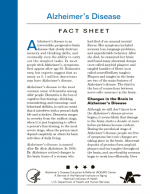Home safety can be a concern for those with Alzheimer’s disease who may have a diminished attention span, problems recognizing familiar objects, and difficulty making decisions, sensing danger, and communicating. Some people with Alzheimer’s begin to wander, and this can lead to serious safety concerns. There are also problems with physical perception such as reduced vision, hearing, and depth perception. Finally, they may lose physical strength and suffer from poor coordination and motor skills. For all of these reasons, it is important to try to prevent unsafe situations, and at the same time make the person feel calm and comfortable in the home. The caregiver should do a room by room safety check and periodically reassess needs as the disease progresses. It is possible to modify and adapt the home while keeping the surroundings familiar.
General Precautions
- Keep important and emergency phone numbers handy.
- Ensure adequate lighting throughout the home; install night lights.
- Keep entryways, halls and floors free of clutter, extension cords and scatter rugs; avoid placing furniture in walking areas.
- Secure locks on windows and doors; keep a spare key hidden outside the home or give one to a nearby friend or neighbor.
- Use childproof locks for toxic substances, medications and alcohol.
- Ensure that smoke detectors are in working order.
- Install handrails on stairs, grab bars in bathrooms and other devices designed for those who need physical assistance.
- Remove and safely store potential hazards such as weapons, plastic bags and power tools.
- Protect computers and information stored on them.
- Consider investing in a sound monitor, such as those used with babies.
- Consider labeling doors to rooms such as “bedroom,” “bathroom,” etc.
- Ensure that emergency plans are in place.
Outside the Home
- Ensure steps are sturdy; consider installing treads for more traction, or possibly building a ramp.
- Mark the edges of steps and walkways with bright tape.
- Remove uneven surfaces.
- Ensure adequate outdoor lighting.
- Prune bushes and trees away from walkways and entryways.
Bathroom
- Remove door locks.
- Place a bathmat or adhesive strips in tub and/or shower.
- Consider using adhesive strips or carpeting on the floor.
- Install grab bars in tub and use a bath chair or stool in the tub or shower.
- Install grab bars around the toilet and use raised toilet seats.
- Use a hand-held shower nozzle.
- Install padlocks or childproof latches on cabinets containing medicine, cleaning fluids and other dangerous products.
- Cover the faucet in the tub with a soft material like a sponge to help prevent injury if the patient falls in the tub.
- Color-code faucet handles, red for hot and blue for cold; keep water temperature at 120 degrees to prevent scalding.
Kitchen
- Remove knobs from the stove, or install an automatic shutoff switch.
- Use a padlock or childproof latches on cabinets that contain cleaning supplies or other hazardous materials.
- Lock up knives, scissors and other potentially dangerous utensils.
- Keep a fire extinguisher in the kitchen.
- Keep handles of pots and pans facing towards the back of the stove.
- Place emergency numbers on the refrigerator.
- Remove area rugs in front of sink or under the table.
- Remove or secure small objects (e.g., matches and paper clips) and objects that appear edible that may be mistakenly eaten.
Stairs
- Mark the top and bottom of the stairs with bright yellow tape.
- Install gates at the top and bottom of the stairs.
- Install a handrail on both sides of the stairs (if possible).
Fire, Burn and Electrical Shock Safety
- Purchase a fire extinguisher and smoke detectors for each level of the home (including the basement).
- Put a smoke detector in the patient’s bedroom.
- Determine a fire emergency exit route and practice using it.
- Post the fire department emergency number in a prominent place.
- Keep hot water temperature below 120 degrees.
- Keep lighters and matches locked up.
- Avoid the use of portable heaters.
- Guard radiators.
- Avoid running electrical cords in open spaces where the patient can reach them.
- Place childproof covers over plugs.
Personal safety (especially for those who may wander)
- Get a medical identification bracelet for the person with Alzheimer’s disease to notify rescuers, local police, medical staff and others of the patient’s condition in the event of an emergency.
- Notify neighbors, local merchants and police about potential wandering.
- Keep medical records on hand at all times.
- Keep a recent photo and video of the person handy.
- Label clothing with the person’s address and phone number to aid in identification in case he/she gets lost.
- Arrange furniture, remove clutter and make sure floors have good traction so the person can move around easily.
- Remove or firmly tape down any scatter rugs, area rugs or moveable carpets.
- Purchase rubber-soled shoes or slippers for your loved one to avoid falls.
- Keep a working flashlight by your bed.
- Use nightlights, especially so the person can find the bathroom.
- Remove weapons from the home.
- Lock up over-the-counter medicines, prescription medicines and cleaning fluids.
Pages: 1 2






Leave a Reply